THE BUZZ AT KEPO
What's the Buzz at KEPO?
Welcome!
This is the official newsletter of the Kahnawà:ke Environment Protection Office (KEPO). In the past, KEPO had newsletters focused on specific topics that were meant to serve as guides to various habitats, plants, and wildlife in the community. The Buzz at KEPO is a new quarterly newsletter that will provide updates on current KEPO initiatives and events, as well as environmental information relevant to Kahnawa'kehró:non. Keep on reading to see what we’ve been doing to protect and better our environment.

Climate Change Project Update
Seed Collection Program
Kahnawà:ke Youth Delegation
Pollinator Garden Photo Review
Tioweró:ton Work Update
Staff Updates
Wildlife Profile
Fieldwork Photos
Citizen Science: Nature Apps


Highlights & Project Updates
TheOfficialNewsletteroftheKahnawà:keEnvironmentProtectionOffice FIGHTING TO PROTECT & BETTER OUR ENVIRONMENT S E P T E M B E R 2 0 2 2 | I S S U E 0 2
Project Update
Climate Change Projects
by Marina Gosselin, Environmental Projects Coordinator - Climate Change
KEPO will continue to work to address and reduce the community’s contribution to climate change. New activities are being planned with funding from the Climate Change and Health Adaptation Program from Indigenous Services Canada.
Activities within this project will include addressing climate anxiety in youth through workshops, tree planting, awareness-raising campaigns on climate hazards, conducting an emissions inventory, techniques to reduce the effects of heatwaves, and more. The main goal of this project is to put Kahnawà:ke in a better position to adapt to climate change and its associated risks and reduce local contributions to this issue. The activities planned will focus on mitigating climate change by reducing GHG emissions, and adapting to climate change through awareness raising and preparedness activities. We will be promoting activities for community participation, as well as strengthening the capacity of Kahnawa’kehró:non to respond to climate change
Through this project, our community will be paving the way to adapt to climate change and its associated risks, which we aim to achieve through communication, education, preparation, and capacity building.
Contact KEPO to be added to our volunteer list for upcoming tree planting events or learn about upcoming climate actions.


Program Update
Ash Seed Collection Program

 by Cole Delisle, Environmental Projects Coordinator - Terrestrial Habitats
by Cole Delisle, Environmental Projects Coordinator - Terrestrial Habitats
The past few years, the toll that the emerald ash borer (EAB) has taken on our ash trees has become much more noticeable. Large numbers of ash trees in the community have been killed by the beetle leading to changing forest and backyard landscapes For several years, KEPO has been working with the National Tree Seed Center (NTSC) to save the seeds of ash trees for the future so we can help the recovery of the species
Ash seeds are collected by KEPO staff in lateSeptember through October from trees throughout the territory Seeds are then brought back to the office to be dried to keep them in good condition Once collection is complete, the seeds are shipped to the NTSC where they’re kept frozen for long term storage he seeds need to be stored for several years until the AB threat has passed before they can be planted.
his year we’ve been working on building our own seed ault in order to keep a portion of our collection in the ommunity. For now, the primary focus will be on ash eeds, but the seed vault can be used to help preserve ther species which might be threatened in the future you would like to help conserve this species, please t us know if you have a h t i d roperty that we could ha ollection!
FIGHTING TO PROTECT & BETTER OUR ENVIRONME
S E P T E M B E R 2 0 2 2 | I S S U E 0 2
Example of collected ash seeds with tags.
2019 Tree Planting Event.
Community Collaboration

Kahnawà:ke Youth Delegation
by Julie Delisle,
Liaison
This November, seven youth from Kahnawà:ke will be on their way to Sharm-El Shiek, Egypt for COP27, The United Nations Climate Change Negotiations COP27 will be a milestone event that will focus on mitigation, adaptation and ways to implement actions in line with the Paris Agreement’s (COP 21) long-term goals This will be the second youth delegation to attend the negotiations to represent Kahnawà:ke and Kanien'kehá:ka youth voices, through the efforts of the Kahnawà:ke Collective Impact (KCI)
During COP26 in Glasgow, we learned that our voices as indigenous youth need to be included in discussions surrounding climate policy and solutions. Indigenous peoples are directly impacted by climate change and often have the knowledge to mitigate these impacts on their traditional territories Decisions made today will impact our rights, our Mother Earth, our cultures and our next seven generations We need to be involved in making these decisions.
KEPO will continue to support the climate action work of the group Beyond participating in COP, the group hopes to engage other youth in environmental work in the community How can youth become more involved in local environmental decision making? How can youth gain experience in the environmental field? What opportunities are there to volunteer or network in the field?
Contact KEPO or KCI if you want to learn more or get involved KEPO: 450-635-0600
FIGHTING TO PROTECT & BETTER OUR ENVIRONMENT S E P T E M B E R 2 0 2 2 | I S S U E 0 2
Environmental Education
Top row LR: Dawson Horne, Brandon Montour, Karahkwinetha Sage Goodleaf, Ohontsakéhte Montour, Kenneth Deer.
Bottom row LR: Iotshatenawi Reed, Sha'teiohseriio Patton, Carlee Kawinehta Loft, Julie Teiokeráthe Delisle.
Photo by Martin Akwiranoron Loft
Project
Here is a look at what was GROWing on this summer in the pollinator garden.
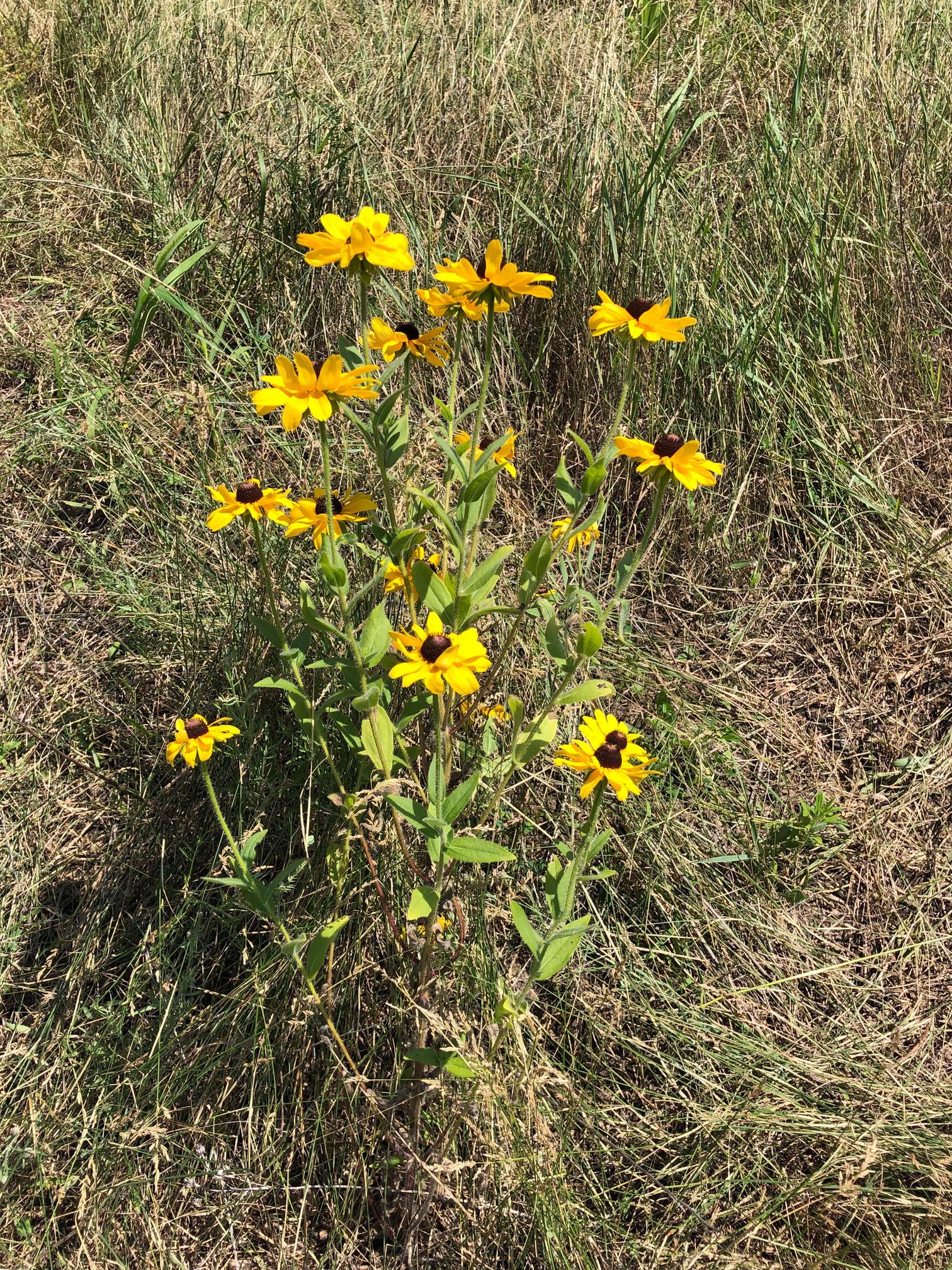
Pollinators sustain our ecosystems and produce our natural resources by helping plants reproduce
The pollinator garden is still going strong! The garden was first established in 2015 on Tekakwitha Island and further expanded in 2017.
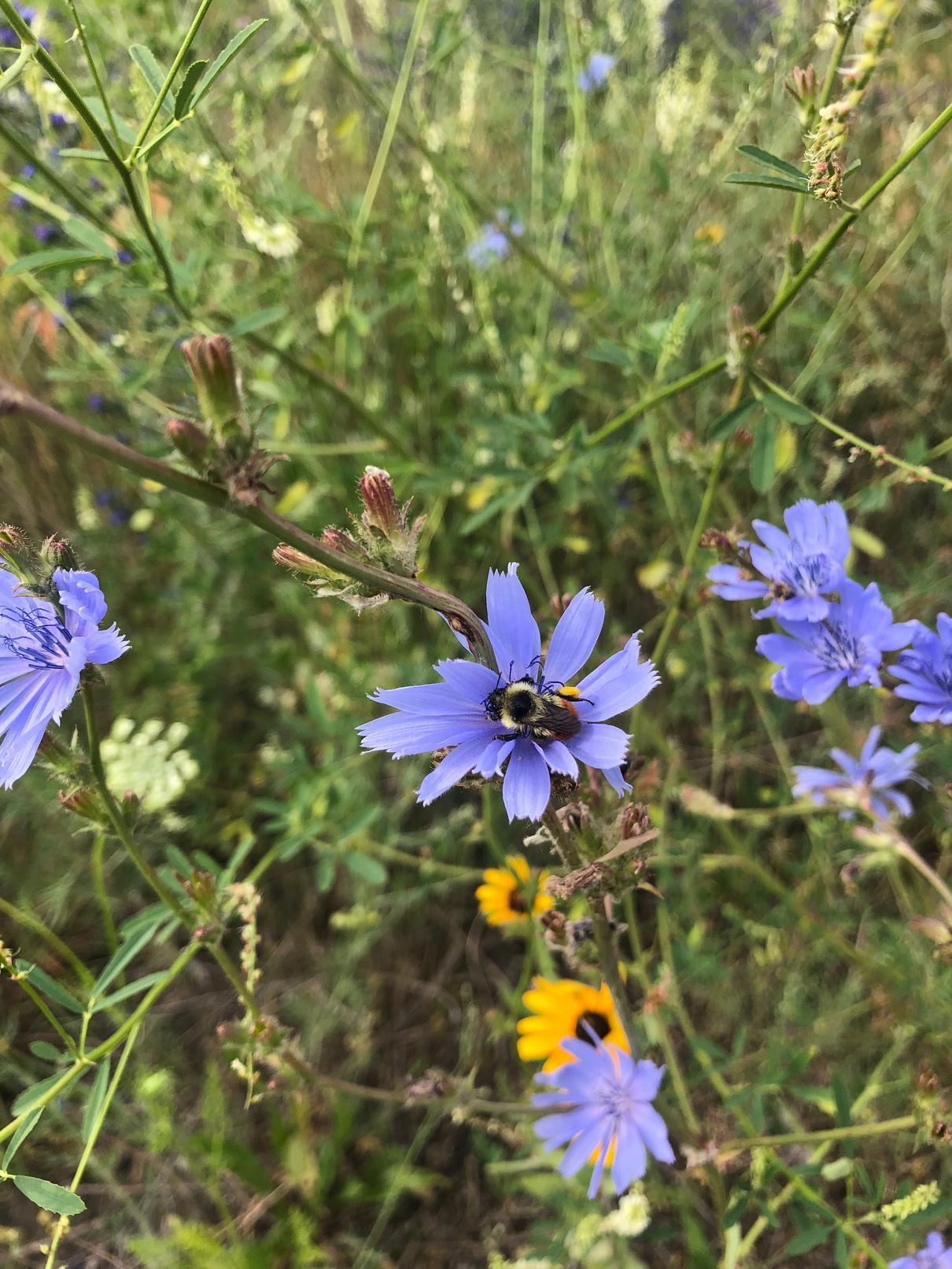

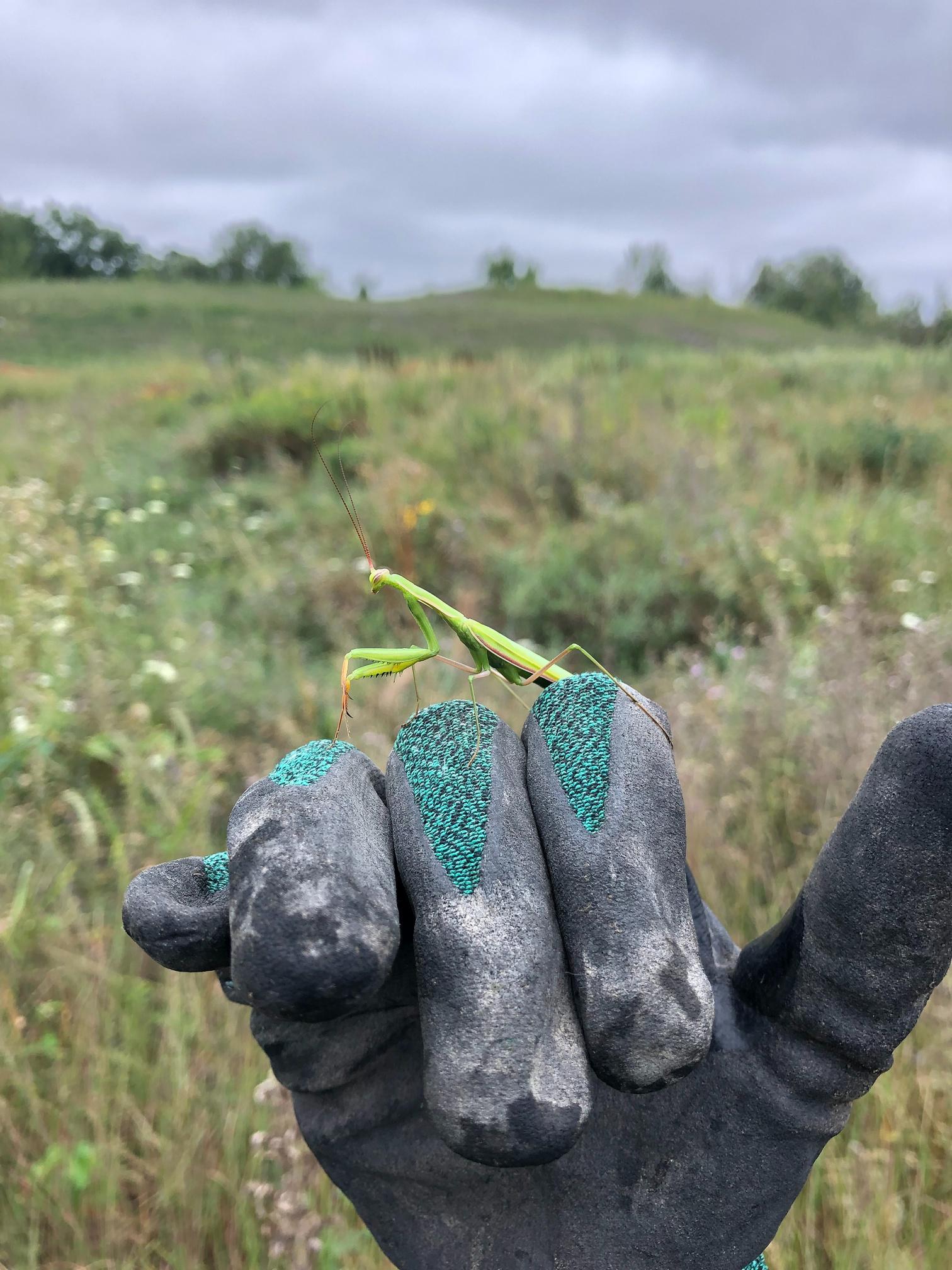


Maintaining the garden can be a challenge due to invasive plant species that need constant removal and control.

Species found in garden:
Butterfly milkweed
Common milkweed


Purple coneflower
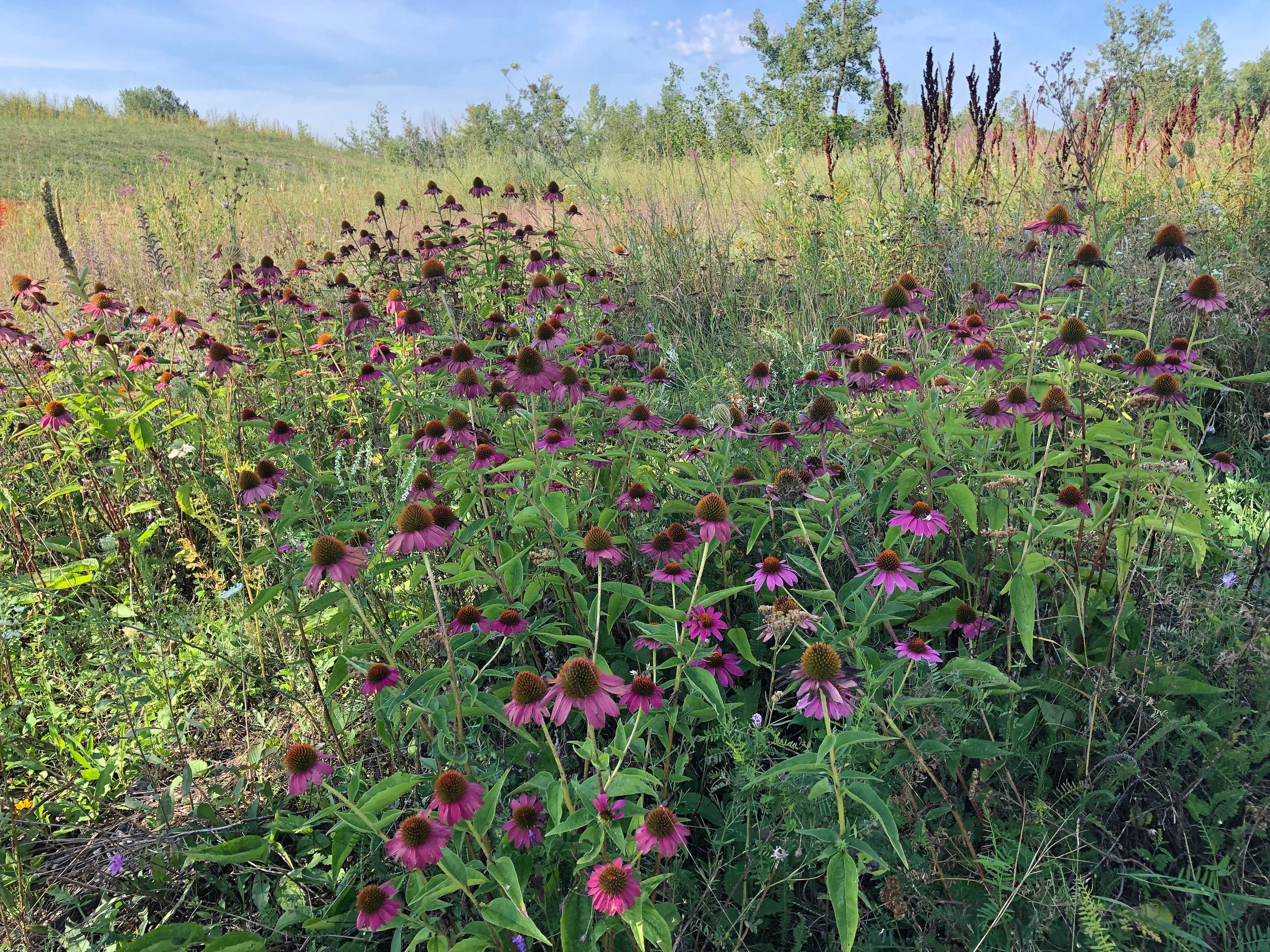
Rock rose
Evening primrose
St John's wort
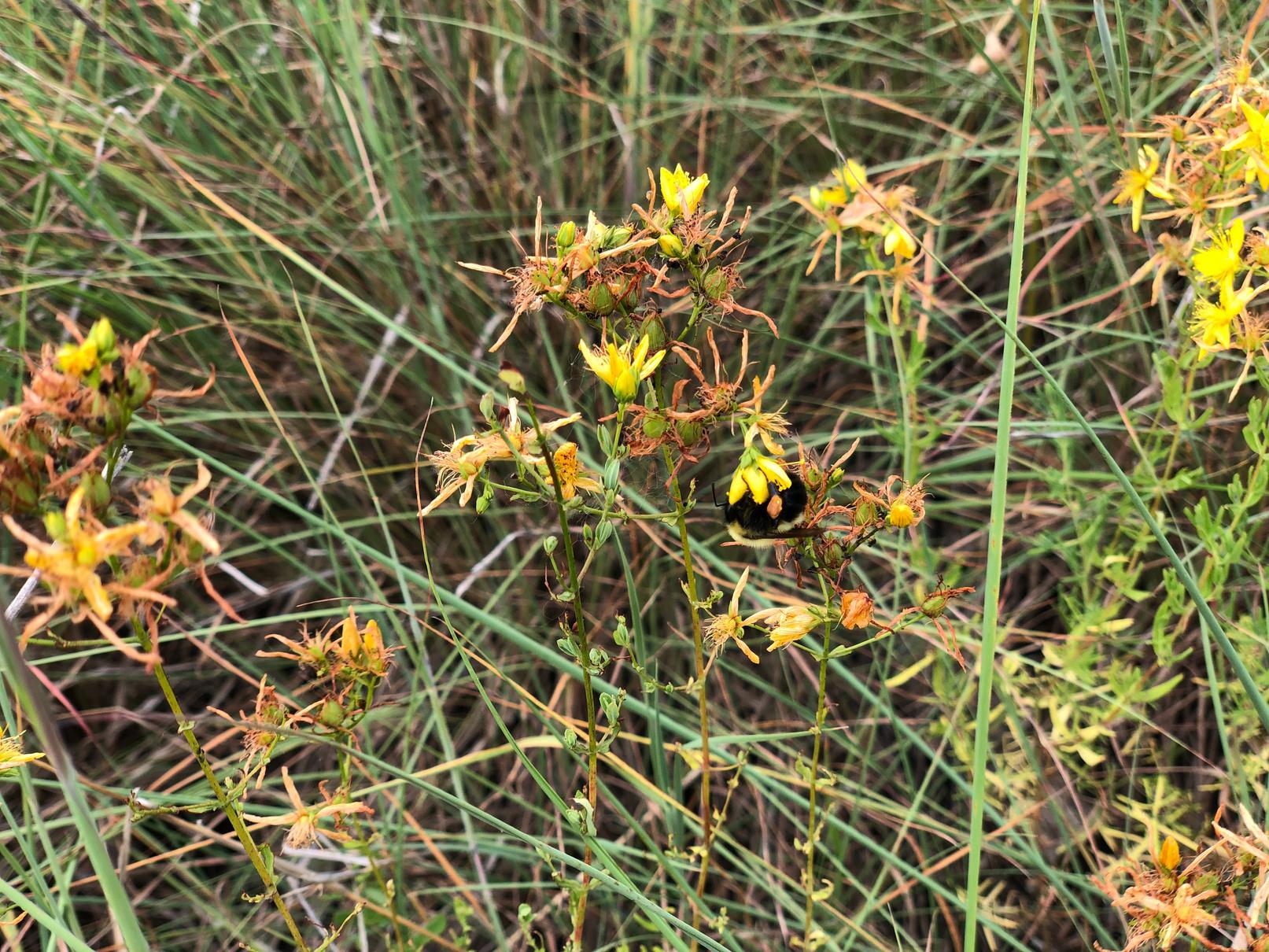
False indigo-baptisia
Cow vetch
Spiked speedwe
Giant hyssop
Sunflower
Large flower
tickseed
Yarrow
Phlox peacock
Fleabane

FIGHTING TO PROTECT & BETTER OUR ENVIRONMENT
S E P T E M B E R 2 0 2 2 | I S S U E 0 2
Tioweró:ton
Brook Trout Conservation Strategy

 by Brandon Rice, Project Support Technician
by Brandon Rice, Project Support Technician
KEPO has continued work on the Tioweró:ton Brook Trout Conservation Strategy during the summer of 2022. We worked to assess tiotià:kton (brook trout) growth rates and the seasonal and climate change-related trends in temperature and water depth in the territory Both approaches will help us better understand the overall health of the tiotià:kton populations in Tioweró:ton
Our first step was to work directly with the local fishers in the territory to collect trout growth rate data Fast growing fish are usually found in healthy populations, while slow fish growth indicates stress on the population We are working with five local fishermen to collect length data and ageing structures (fins and inner ear bones – otoliths) from harvested trout since June To protect fishing knowledge and privacy, KEPO will not share catch details but will share summarized growth data once fish ages have been determined from lab examination of fins and otoliths We have chosen this approach because it makes further use of fish already being harvested for sustenance and puts no additional stress on trout populations
Our second project was to better understand the habitat in which the trout are living. Trout need cool and clean water to thrive - conditions that are threatened by climate change and other human disturbances. Changes in lake water levels like those reported by the Caretakers and others (resulting from flooding and beaver dam breakages) could also affect temperature. In August, we successfully deployed two data logging stations each in Red Trout Lake, Gagnon, Little Gagnon, John and Little John. Each station has small sensors that record temperature and depth to monitor these variables every hour over the year. We look forward to sharing preliminary data with you in our next update! This project will continue to provide information on climate change impacts in these lakes for years to come.

FIGHTING TO PROTECT & BETTER OUR ENVIRONMENT
S E P T E M B E R 2 0 2 2 | I S S U E 0 2
Red Trout Lake.
Staff Updates
Welcome to Benjamin Green-Stacey!
Benjamin joined the KEPO team in September 2022 as the new Director of Environment Protection He comes to this role from the Assembly of First Nations where he advocated on a wide range of environmental issues including: area based conservation and the importance of Indigenous Protected and Conserved Areas, species at risk and the stewardship of culturally significant species, wildlife health and the cultural impacts of zoonotic diseases, and on development of the Post 2020 Global Biodiversity Framework of the Convention on Biological Diversity
Benjamin is passionate about revitalization of the Kanien’kéha language. Over the past few years he has made efforts to improve his Kanien’kéha proficiency including through Six Nations’ Onkwawenna Kentyohkwa online program, through lessons hosted by the Native Canadian Centre of Toronto, and through resources put out by Kahnawà:ke’s Kanien’kehá:ka Onkwawén:na Raotitióhkwa Language and Cultural Center.
He is looking forward to working with KEPO and Kahnawa’kehró:non to find culturally grounded opportunities for positive growth in Kahnawà:ke’s environmental protections and the assertion of jurisdiction over environmental protection matters.

Ó:nen ki’wáhi - Farewell...
to Lynn Konwaia’tanón:we’s Jacobs
After more than 20 years with the Kahnawà:ke Environment Protection Office, Lynn made the difficult decision to resign from her role as the Director of Environment Protection to take on new challenges and adventures
Saterahswiiohák -
Good luck Kenneth!
We would like to say farewell to Kenneth Canadian who begins his journey with the Kanien’kéha Ratiwennahní:rats Adult Immersion Program for the next two years Kenneth has been in the role of Environmental Technologist since 2019 and with KEPO as a summer student before that

Good luck Kenneth and we will see you soon!
Lynn started her career as a summer student with KEPO in 1994, and a few years later as an employee She has seen KEPO through decades of incredible work and growth. She is grateful to have had the chance to work and learn in all the natural environments in our Territory, restore degraded habitats, and advocate for the protection of our environment for all our relations Lynn helped to develop and lead the new KEPO unit since 2018, with a focus on science, education, and land-based knowledge.

We are so thankful for Lynn’s contributions to KEPO, the community, and the natural world We look forward to hearing about all the great things she will accomplish next.

FIGHTING TO PROTECT & BETTER OUR ENVIRONMENT S E P T E M B E R 2 0 2 2 | I S S U E 0 2
wildlife profile
Virginia Rail
Rallus limicola
The Virginia Rail is a chickenlike marsh bird with a long bill and short tail. They have a laterally compressed body, meaning they look thin from the front but full-bodied from the side They are rust and dark brown coloured with a grey face and black and white under tail feathers.
The Virginia rail is a shy bird that is often heard instead of seen They have a number of calls usually heard at night They can be found foraging through wetlands under cattails and bulrushes. Virginia rails and other marsh birds are a sign of a healthy wetland

The Virginia rail mainly eats insects and other aquatic invertebrates or animals. They will lay a clutch of 4 to 13 white eggs They are incubated and fed by both parents The young will learn to fly in less than a month.
Fieldwork Photos

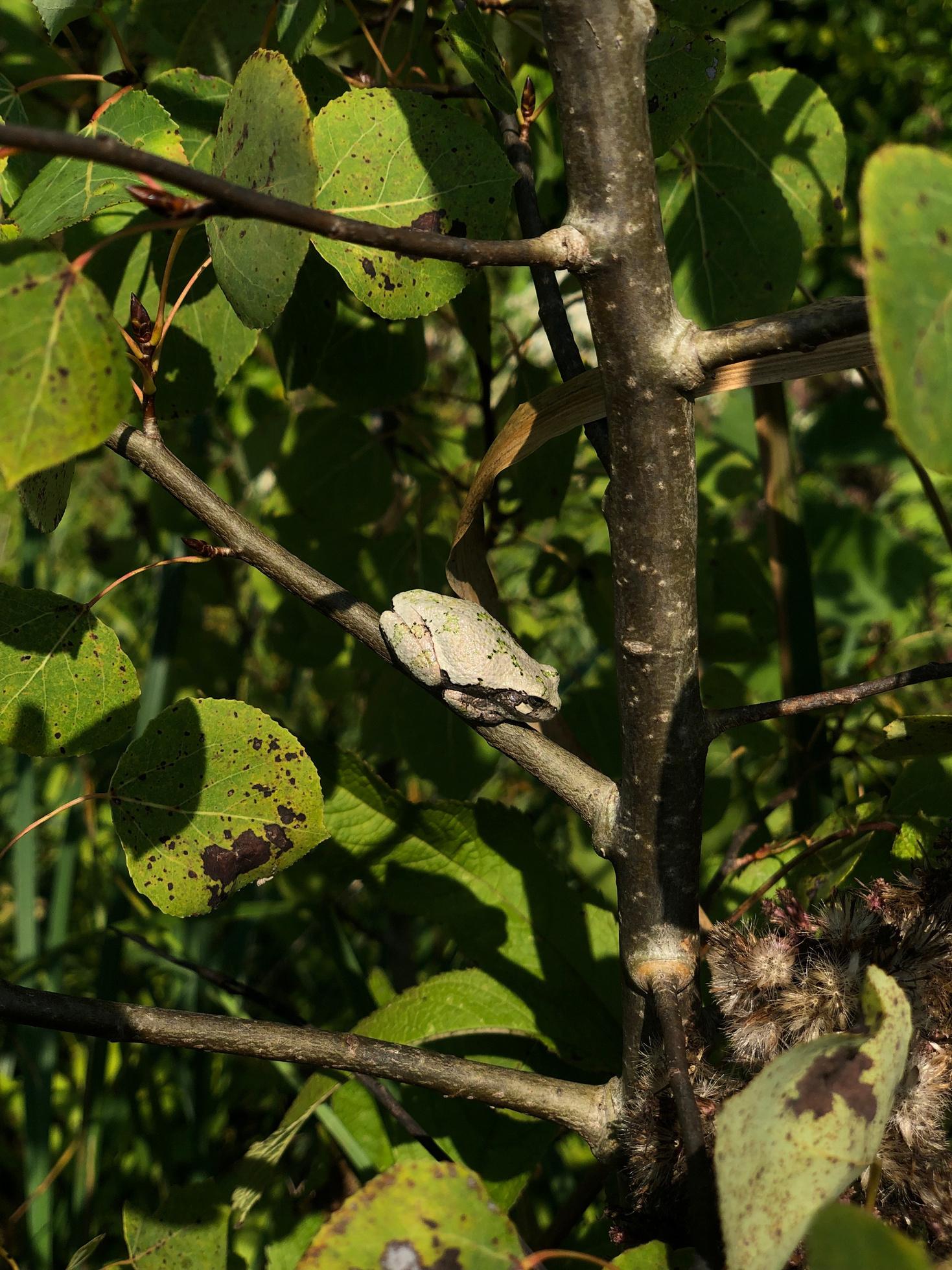

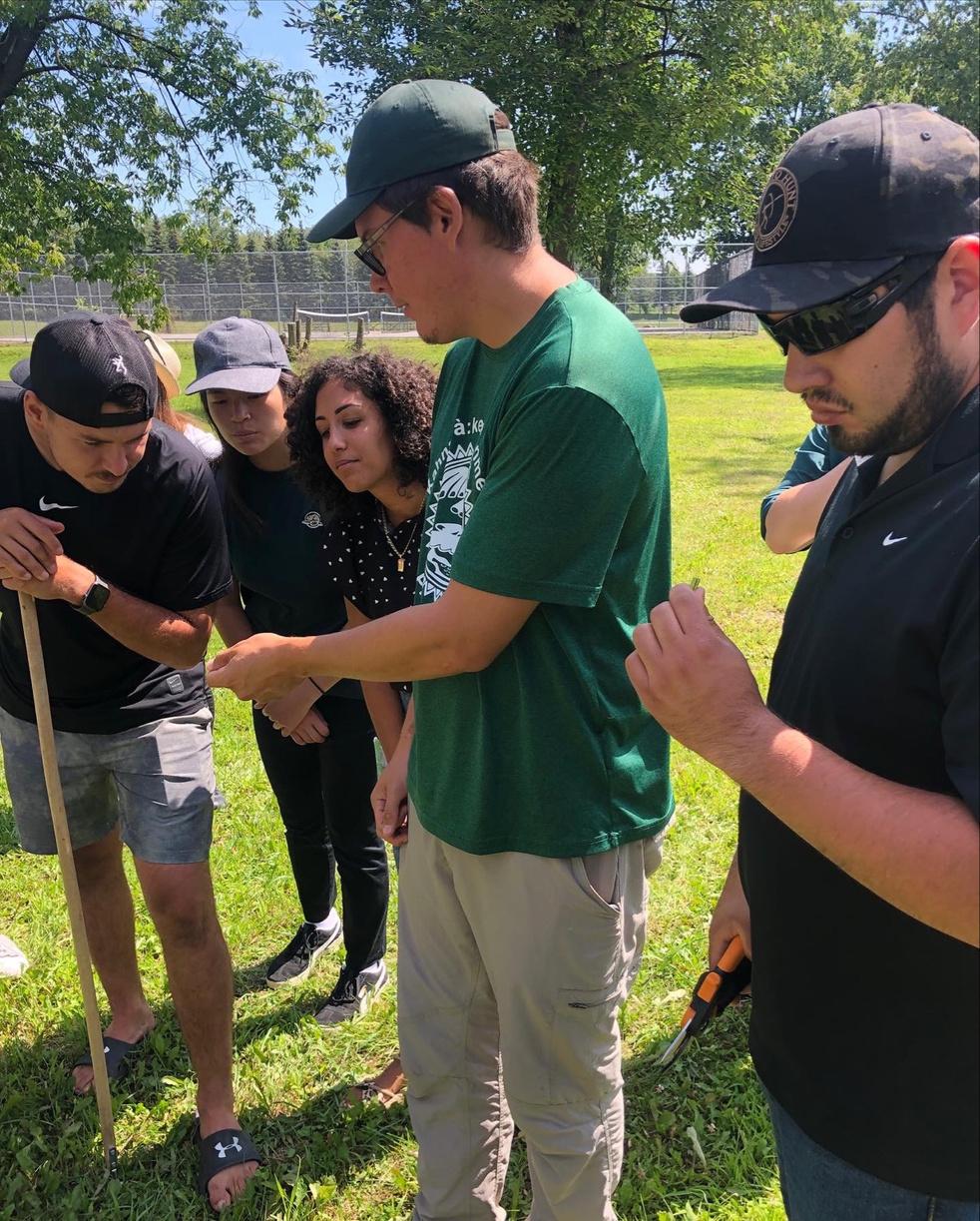

Invasive phragmites threaten their habitats
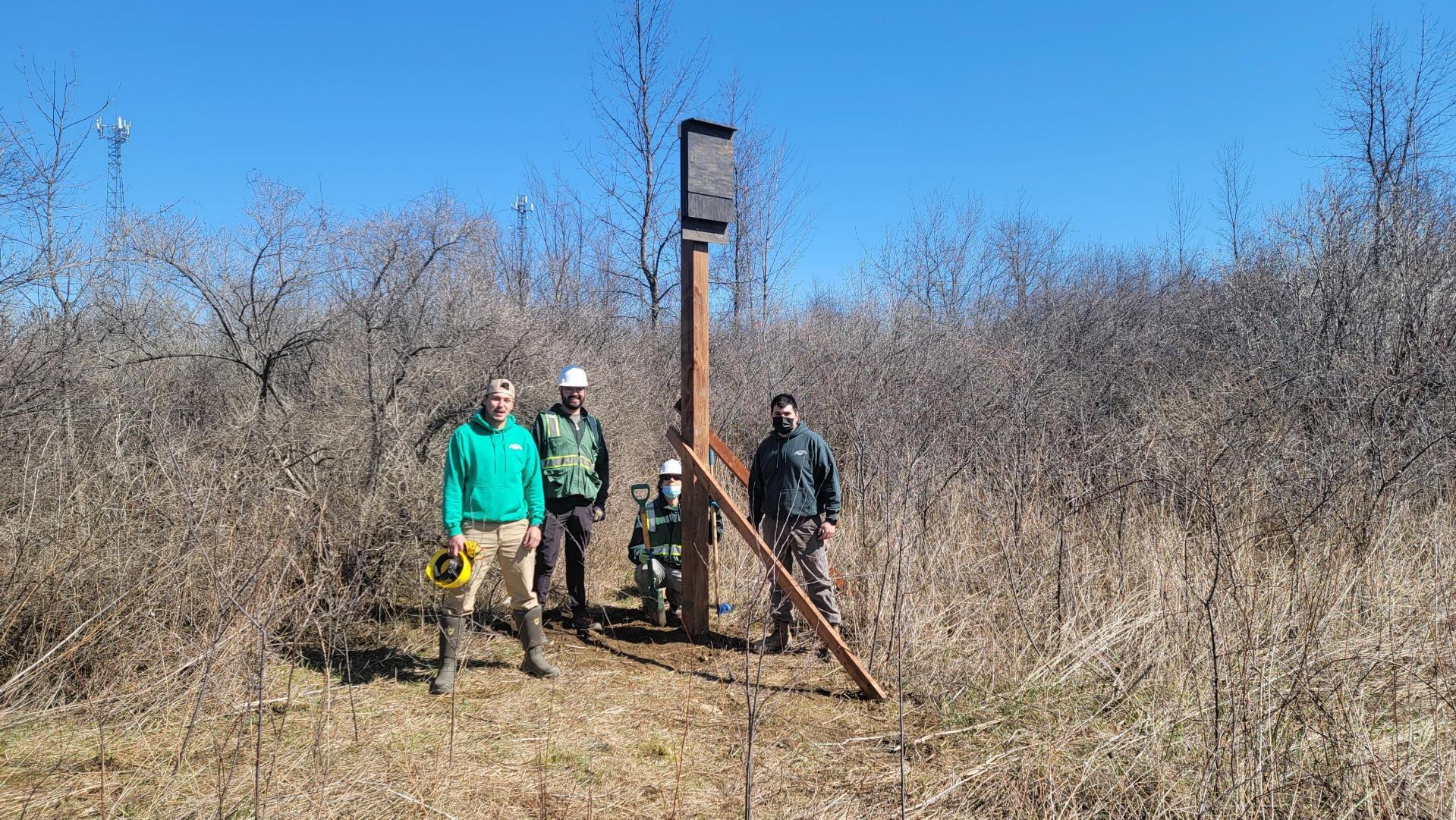

Typically 10″ tall with a 15″ wingspan.
They are monogamous birds.
Most migrate to the southern United States and northern Mexico
FIGHTING TO PROTECT & BETTER OUR ENVIRONMENT S E P T E M B E R 2 0 2 2 | I S S U E 0 2
A group of Virginia rails are called a "reel" of rails
Community tour with Dwayne Stacey of Kahnawà:ke Tourism
This summer has been fieldwork filled for the KEPO team.
Seed identification training.
Bat house installation
Seed identification training
Adopt a River Training
Grey tree frog
Setting up minnow traps
iNaturalist


iNaturalist can help identify flora and fauna through photo observations with 95% accuracy. Your observations will contribute to valuable biodiversity data through this user-friendly app
Merlin Bird ID
Merlin Bird ID allows users to identify birds using photos or sound recordings
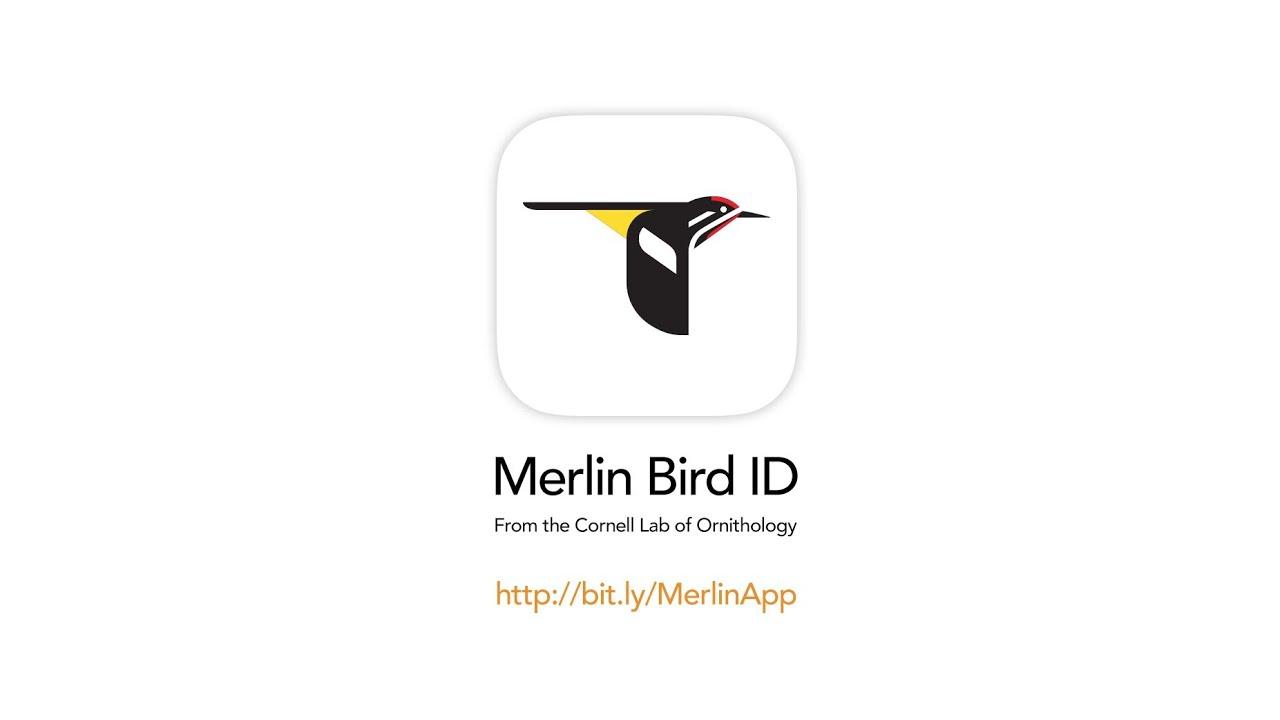
It can also help identify birds through simple questions and give species information once identified
Audubon Bird Guide
The Audubon Bird Guide is an easy to use field guide to North American birds Use your location and simple filters such as habitat, color, size and wing shape to accurately identify over 800 species
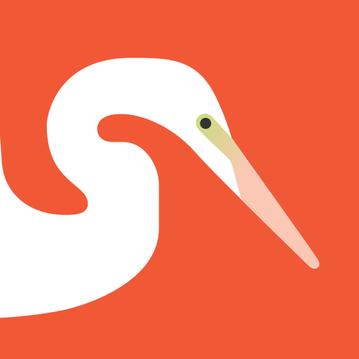
Kahnawà:ke Environment Protection Office
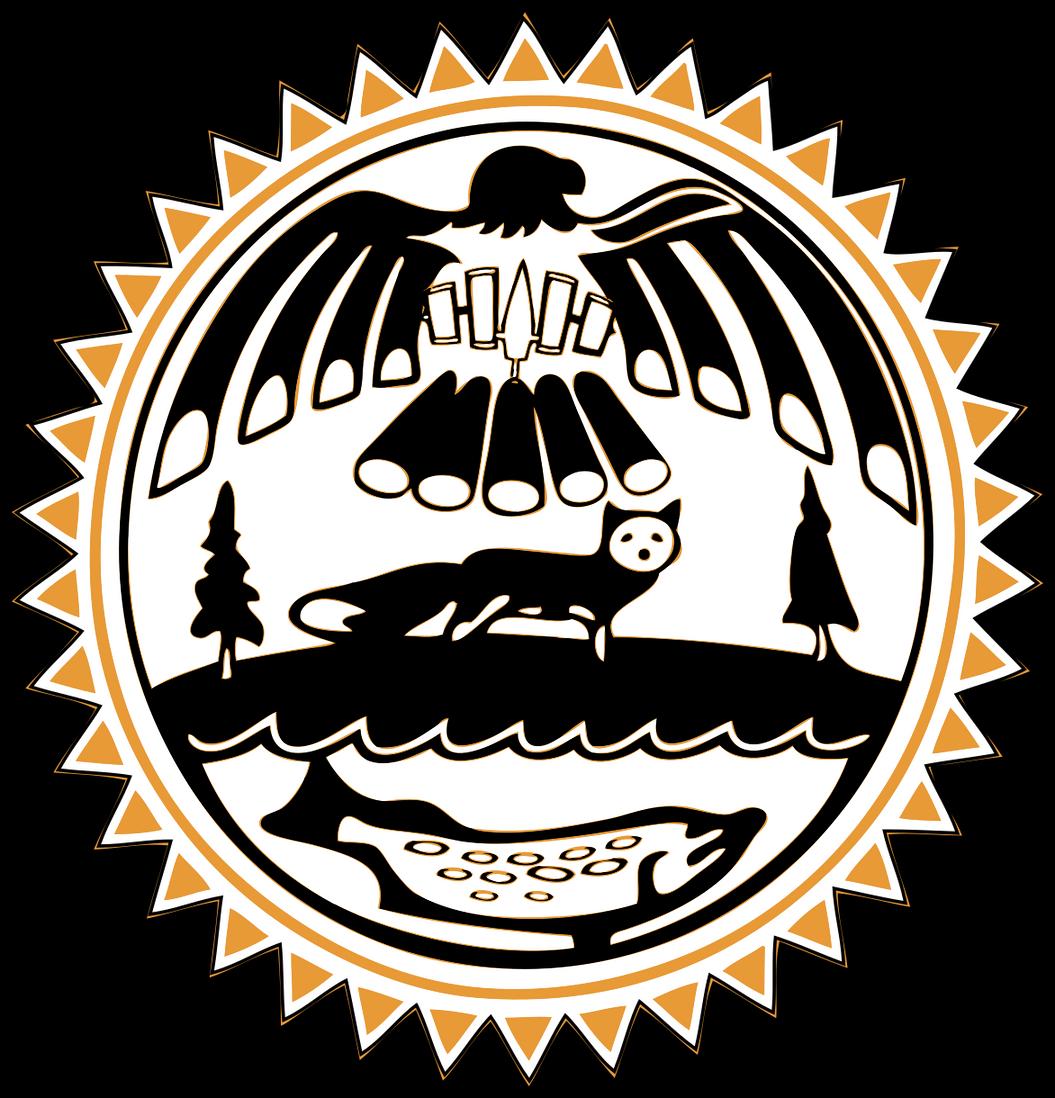
MyNature Animal Tracks
This app helps you match a set of tracks to a species through seven track categories and five scat categories The app has a built-in ruler for measuring track sizes, and gives tips for tracking animals

Plantnet
Plantnet can provide accurate identification of over 20 000 plants with just a photo. This will work for almost any type of plant, tree or shrub Your photos can help scientists understand and preserve plant biodiversity

450-635-0600 environmentprotection@mck.ca kahnawakeenvironment.com @KahnawakeEnvironment P.O.Box720 Kahnawà:keMohawkTerritory J0L1B0
S E P T E M B E R 2 0 2 2 | I S S U E 0 2 FIGHTING TO PROTECT & BETTER OUR ENVIRONMENT
Citizen Science
Here are a few nature identification apps that we've been using...







 by Cole Delisle, Environmental Projects Coordinator - Terrestrial Habitats
by Cole Delisle, Environmental Projects Coordinator - Terrestrial Habitats













 by Brandon Rice, Project Support Technician
by Brandon Rice, Project Support Technician



















